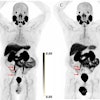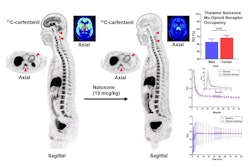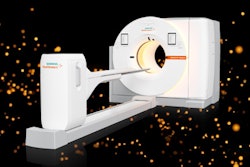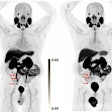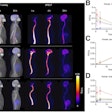PET has provided the first neuroimaging evidence that music affects the brain’s opioid receptor system, according to researchers in Finland.
The finding is from a study in which 15 women underwent two PET scans, one before and then one while listening to their playlists, and reveals new information on how the brain responds to sources of pleasure, noted lead author Vesa Putkinen, PhD, of Turku University Hospital in Turku, and colleagues.
“Unraveling the molecular neural basis of musical hedonia is crucial for understanding the universal human affinity towards music,” the group wrote. The study was published April 4 in the European Journal of Nuclear Medicine and Molecular Imaging.
Music has been constant in human evolution and remains one of the most common sources of pleasure, despite offering no obvious survival advantage, the researchers explained. Most brain studies to date have used functional MRI to explore how music-induced pleasure activates brain networks, yet these studies have been unable to resolve the underlying neurochemistry, they noted.
Previous PET studies using a radiotracer (carbon-11 carfentanil) that targets the brain’s mu-opioid receptors have revealed opioid release following rewards such as eating and sex, and in this study, the researchers hypothesized that the technique may reveal similar activity in response to music.
The group enrolled 15 women between 19 and 42 years old who compiled a 90-minute playlist of their favorite music, with most stimuli being contemporary pop, R&B, and rap/hip-hop, the authors noted. On separate days, the participants underwent two 51-minute PET/CT scans (Discovery 690, GE HealthCare), one baseline scan, and one while listening to their playlists.
Additionally, the participants were asked to verbally report their level of pleasure on a scale of 1 to 10 (no pleasure to high pleasure) every 10 minutes and report the occurrence of music-induced chills with a button box.
According to an analysis of the images, PET revealed that pleasurable music increased C-11 carfentanil binding in several cortical and subcortical regions, including the ventral striatum and orbitofrontal cortex. These are areas of the brain’s reward system and are known to contain “hedonic hotspots,” the group wrote.
 Regions showing increased carbon-11 (C-11) carfentanil binding during music listening relative to neutral baseline. The data are thresholded at p
Regions showing increased carbon-11 (C-11) carfentanil binding during music listening relative to neutral baseline. The data are thresholded at p
In addition, C-11 carfentanil binding in these areas while the subjects listed to music was associated with the number of pleasurable chills they experienced, which links the subjective experience of pleasure to striatal opioid release, they added.
“These findings provide the first neuroimaging evidence that pleasurable music modulates [mu-opioid receptor] system function,” the group wrote.
The authors noted that they enrolled only women to maximize the statistical power of the study, given that there is variability between men and women in the spatial distribution of mu-opioid receptors and that women report stronger emotional responses. This limits the generalizability of the results to males.
Nonetheless, the study underscores the involvement of mu-opioid receptors not only in primary reward processing but also in mediating pleasure responses to abstract, aesthetic rewards, the group added.
“Clinical studies should further explore whether MOR signaling mediates the analgesic, emotional, and cognitive effects of music-based interventions for pain and neuropsychiatric disorders,” the researchers concluded.
The full study is available here.


